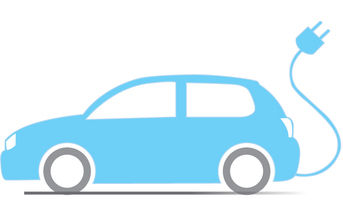
One major hurdle is that electric two-wheelers and three-wheelers powered by conventional lead-acid batteries are no longer eligible for incentives as they were under FAME-I. The industry is hopeful that the new government will be taken into consideration electric two-wheeler and three-wheeler powered by conventional lead-acid batteries and that it will be eligible for claiming subsidy under second phase of FAME-2 as to give it a sales thrust, consumer experience and help build a customer base.
In its last 5-year tenure the government had extended the first phase of the FAME-India scheme for promoting electric and hybrid vehicles by another six months, however it had withdrawn benefits available to conventional battery vehicles. The EV players are hoping that the government should allow these vehicles to avail sops which were withdrawn by the previous government. The industry is hoping that the new government will create an optimistic milieu for the Environment friendly technologies as they are focused on reducing emission of green house and reducing carbon emission.
Another challenge so far has been that customers still don't forecast the advantages of buying these electric vehicles, owing to lack of proper infrastructure. And capital required to create charging infrastructure requirement to meet the demands of mass market EV adoption is another barrier. Hence, lack of infrastructure poses big challenge as this leads to poor consumer interest. So, this is something that the new government should take up.
Also, the EV Industry needs a long-term policy for investment in the sector and incentive as customer inventive scheme is extended for 6 months only from last two stances by the government in its last tenure.
Needs more support of the government
While in the last tenure there have been initiatives in favour of the growth of the EV Industry nonetheless more can be done by the government in their new term. There also had been delays on behalf of the government.
In 2018 the Prime Minister Narendra Modi had launched the policy on 'Faster Adoption and Manufacturing of Hybrid and Electric vehicles' (FAME-II) but this was expected to be for a longer duration and not just six months.
Also, EV manufacturers and sellers were hoping for a single policy that laid out a road map for creating an EV ecosystem, including charging stations and manufacturing and buying incentives.
Furthermore, the reason behind the drop-in sales is that none of the EVs sold in the country currently are able to meet the new criteria outlined by the Department of Heavy Industries (DHI) under the recently announced second phase of the FAME scheme. In addition, there is also a re-certification process that resulted in EVs having to undergo the entire process of CMVR Rules, which takes around 30 to 45 days of re-testing and has resulted in many vehicles awaiting certification.
If this scenario is continued by the new government, the target of achieving sales of over 1 million EVs in India in the next few years will certainly not be achieved; in fact it will be difficult to achieve event 50 percent of the expected target.
If the situation is not addressed with corrective measures and supportive policies by the new government, the industry may see dumping of cheap, unreliable products by companies looking to make a quick buck.
Expectations from the new government
It will be good if the new government brings down the GST slab on electronic vehicles to 0-5 percent. Moreover, in times to come the government should encourage the sales by offering subsidies etc. so that demand for these vehicles goes up significantly and the plan should also be to make EV's economically viable on its own.
Also, with the applicable rates for GST customer will gain comprehensive benefit. In addition, control on the traders needs to be increased as they are the ones who distress the image of the industry due to the poor service offered by them.
Furthermore, in order to woo buyers, more capital needs to be pumped to create better charging infrastructure so as to meet the demands of mass market EV adoption.
END





































